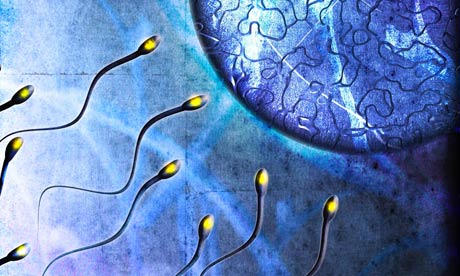I know that this blog is intended for responses to specific media content - namely television, movies, magazines, etc. However, I couldn't help talking about a reading I did yesterday for my Anthroculture 101 class. I laughed as the theme of the reading paralleled many of the themes we have been talking about in this class... I guess it's a good thing that at least some of my 10 wonderful summer credits are overlapping!
This reading, "The Egg and the Sperm: How Science Has Constructed A Romance Based on Stereotypical Male-Female Roles" by Emily Martin (1991) looks at the way that stereotypes about gender are presented in scientific accounts of reproductive biology. Ultimately, she is saying that even scientific discussions and research are shaped and framed by culture constructions of stereotypes.
 Martin (1991) shows how in a lot of biological research, the female reproduction cycle is represented as a "productive enterprise", and menstruation is viewed as the failure of this enterprise. Females are said to "shed" their gamete, whereas men "produce" their sperm. Similarly, eggs that are not fertilized are thought as wasteful, but the hundreds of millions of sperm produced by men each day that do not reach an egg are never considered "wasted". The process of making sperm is even considered "remarkable" in some texts. There is clearly some inequality in the value of the sperm vs. egg.
Martin (1991) shows how in a lot of biological research, the female reproduction cycle is represented as a "productive enterprise", and menstruation is viewed as the failure of this enterprise. Females are said to "shed" their gamete, whereas men "produce" their sperm. Similarly, eggs that are not fertilized are thought as wasteful, but the hundreds of millions of sperm produced by men each day that do not reach an egg are never considered "wasted". The process of making sperm is even considered "remarkable" in some texts. There is clearly some inequality in the value of the sperm vs. egg.
The roles of the sperm and the egg are also talked about in ways that mirror the certain gender roles. The egg is often seen as large and passive, but the sperm is active and on a mission. Discussions about the egg represent it like a "dormant bride awaiting her mate's magic kiss, which instills the spirit that brings her to life" (p. 490).
Finally, the end goal of fertilizing an egg is considered the ultimate prize for a male sperm. One descriptive biology text even stated that the sperm have a mission, and the successful ones "surround the prize", in other words, they reach and fertilize the egg (p. 490).
These frames around the roles of the egg and sperm are nearly identical to many of the gender scripts we have been talking about. The idea of the egg as passive and a hard-to-get prize is similar to Ward (1995)'s description of stereotypical gender roles in media. Furthermore, the sperm's active mission and dominance in the process parallels Ward's (1995) male script of being competitive, taking initiative, and seeing women as a prize.
Overall, I was surprised, and entertained, by the fact that a) my Anthro class was reiterating many of the ideas of this class, and b) that even science, which is thought the be objective, uses society's ideas of gender roles to frame their discussion of the reproductive process!
Martin, E. (1991). The Egg and the Sperm: How Science Has Constructed a Romance Based on Stereotypical Male-Female Roles. Chicago Journals, 16(3), 485-501
Ward, L. M. (1995). Talking about sex: Common themes about sexuality in the prime-time television programs children and adolescents view most. Journal of Youth and Adolescence
Ward, L. M. (1995). Talking about sex: Common themes about sexuality in the prime-time television programs children and adolescents view most. Journal of Youth and Adolescence
No comments:
Post a Comment